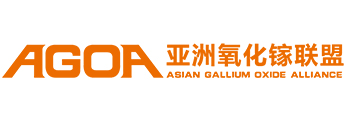

【Epitaxy Papers】Strategic Oxygen Vacancy Control via Defect Engineering in β-Ga₂O₃ Using Rapid Thermal Annealing for Advanced Electronics
日期:2025-08-20阅读:263
Researchers from the Chung-Ang University have published a dissertation titled "Strategic Oxygen Vacancy Control via Defect Engineering in β-Ga2O3 Using Rapid Thermal Annealing for Advanced Electronics" in Optical Materials.

Abstract
This study optimizes annealing conditions for minimizing oxygen vacancies in β-Ga2O3 thin films using Rapid Thermal Annealing (RTA) at various temperatures. The sol-gel-derived thin films were characterized by their crystallographic structure, chemical composition, surface morphology, and optical properties. X-ray diffraction (XRD) analysis confirmed the monoclinic β-phase structure, exhibiting a preferred orientation along the (−201) plane at an annealing temperature of 1100 °C. UV–vis spectroscopy showed high (>85 %) transmittance in all films as well as increased bandgap with fewer defects. X-ray photoelectron spectroscopy (XPS) showed that the O/Ga ratio reached ∼1.4 at 1100 °C, approaching the ideal stoichiometric value of 1.5, while oxygen vacancy decreased to 10.44 %. However, at 1200 °C, aluminum diffusion from the substrate became more pronounced, as confirmed by XPS analysis, revealing Al-related peaks and indicating interdiffusion into the β-Ga2O3 lattice. To examine the defect engineering, photoluminescence spectroscopy (PL) reveals distinct emission peaks at 325 nm, 365 nm, and 415 nm, with the 325 nm peak becoming dominant at higher temperatures. X-ray reflectometry (XRR) revealed a consistent thickness of approximately 100 nm across all samples, with the highest density observed at 1100 °C. Atomic force microscopy (AFM) showed spin-coating-induced ripples at lower temperatures and cracks from thermal mismatch at higher temperatures.
DOI:
https://doi.org/10.1016/j.optmat.2025.117389


